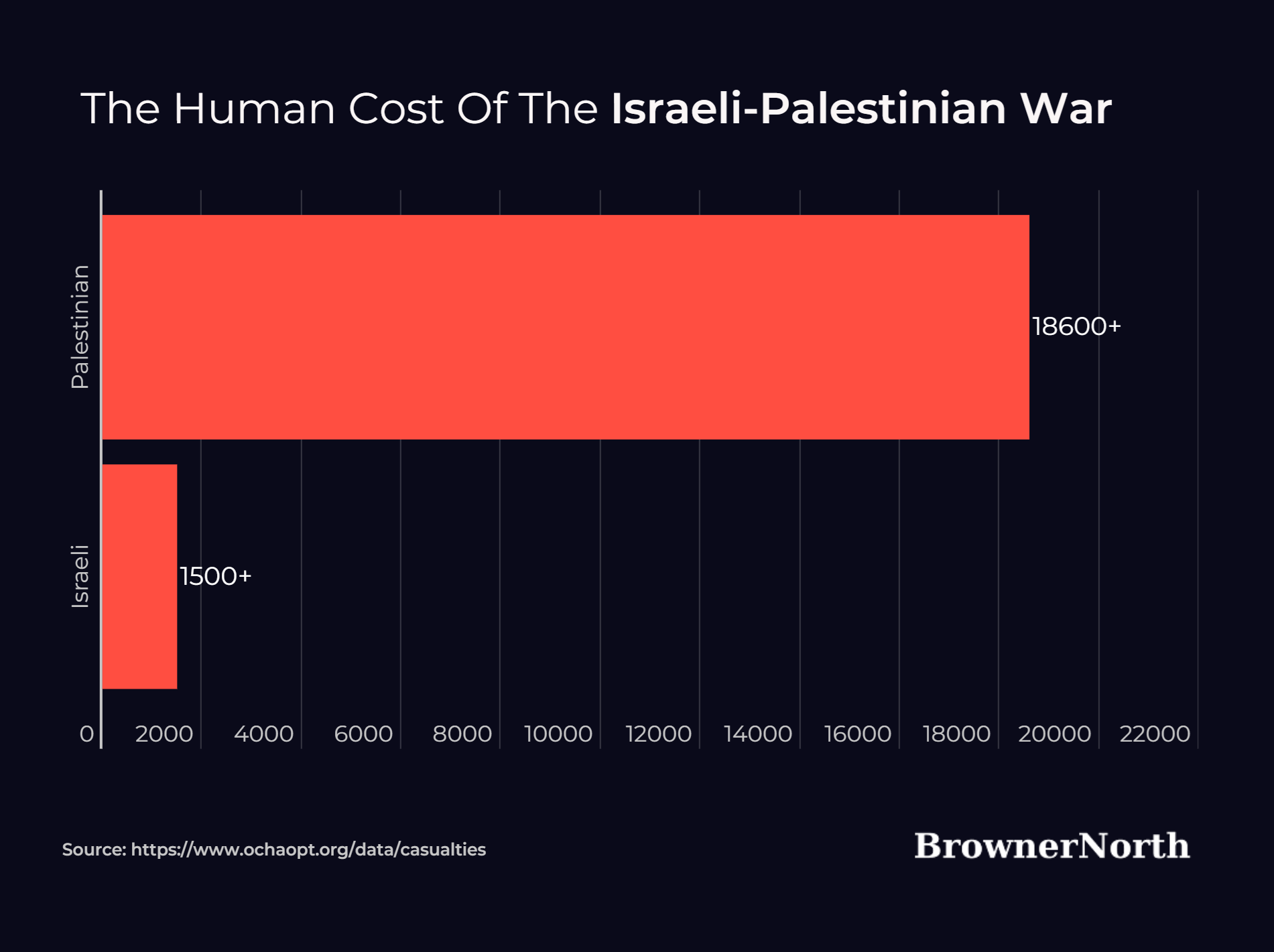When we look at the ongoing conflict between Israel and Hamas, it's more than just a series of dates and figures. Every number in those reports represents a person, a life cut short, a family left grieving. The heartbreaking reality is that the people in the Palestinian territories have been facing the brunt of this tragedy. Every time tensions flare up - be it in 2008, 2012, 2014, 2021, and now in 2023 - it's the same story: the death toll in places like Gaza and the West Bank climbs much higher than in Israel.
Take October 7, 2023, for example. That day was a shock to everyone. It was the kind of day that leaves a deep scar on a nation's memory. Israel faced its one of the worst losses of life, with over 1,200 people, mostly civilians, losing their lives in just 24 hours. This tragedy triggered a fierce response from Israel, and the ensuing weeks have been nothing short of catastrophic for Gaza. We're talking about over 11,000 lives lost - a number that's hard to even comprehend. And this isn’t just a statistic; it's a community devastated, countless stories of newborn babies and kids ended too soon.
The disparity in these numbers is jarring. Since 2008, over 18,600 Palestinians have been killed compared to at least 1,500 Israelis. And injuries? The gap is even wider. More than 183,500 Palestinians have been injured over these years, while the figure for Israelis is around 11,700. These numbers are not just data points on a graph; they represent real human suffering, pain that echoes through communities and across generations.
But numbers can't fully capture the human experience. Behind each statistic is a person with hopes, dreams, and loved ones. The higher casualty rate in Palestinian areas is partly due to the overwhelming difference in military power. Israel's defense, including the impressive Iron Dome system, contrasts sharply with Hamas's more limited capabilities.
The Gaza Strip, a small but densely populated area, has been especially hard hit. It's a place where the impact of each conflict is intensely personal and deeply felt. The same goes for the occupied West Bank.
Hamas, despite being labeled a terrorist group by many countries, has been running Gaza since 2007. Their tactics, which often involve operating within civilian areas, complicate Israel's military response. This strategy unfortunately results in a high number of civilian casualties, adding to the already grave humanitarian situation.
Experts regularly point out how challenging it is to address the Hamas issue without causing significant collateral damage. This ongoing struggle has a profound impact on the people of Gaza - the human cost is immense and deeply distressing.
This situation isn't just a series of battles or political maneuvers. It's a continuing human tragedy that highlights the desperate need for a lasting and peaceful solution. One that recognizes the value of every life, whether Palestinian or Israeli, and seeks to protect those who have already endured so much.
Fatalities from conflicts since 2008 in Israeli-Palestinian war
Read next: Democracy's Rollercoaster: A Musical Journey from 1900 to 2022
Take October 7, 2023, for example. That day was a shock to everyone. It was the kind of day that leaves a deep scar on a nation's memory. Israel faced its one of the worst losses of life, with over 1,200 people, mostly civilians, losing their lives in just 24 hours. This tragedy triggered a fierce response from Israel, and the ensuing weeks have been nothing short of catastrophic for Gaza. We're talking about over 11,000 lives lost - a number that's hard to even comprehend. And this isn’t just a statistic; it's a community devastated, countless stories of newborn babies and kids ended too soon.
The disparity in these numbers is jarring. Since 2008, over 18,600 Palestinians have been killed compared to at least 1,500 Israelis. And injuries? The gap is even wider. More than 183,500 Palestinians have been injured over these years, while the figure for Israelis is around 11,700. These numbers are not just data points on a graph; they represent real human suffering, pain that echoes through communities and across generations.
But numbers can't fully capture the human experience. Behind each statistic is a person with hopes, dreams, and loved ones. The higher casualty rate in Palestinian areas is partly due to the overwhelming difference in military power. Israel's defense, including the impressive Iron Dome system, contrasts sharply with Hamas's more limited capabilities.
The Gaza Strip, a small but densely populated area, has been especially hard hit. It's a place where the impact of each conflict is intensely personal and deeply felt. The same goes for the occupied West Bank.
Hamas, despite being labeled a terrorist group by many countries, has been running Gaza since 2007. Their tactics, which often involve operating within civilian areas, complicate Israel's military response. This strategy unfortunately results in a high number of civilian casualties, adding to the already grave humanitarian situation.
Experts regularly point out how challenging it is to address the Hamas issue without causing significant collateral damage. This ongoing struggle has a profound impact on the people of Gaza - the human cost is immense and deeply distressing.
This situation isn't just a series of battles or political maneuvers. It's a continuing human tragedy that highlights the desperate need for a lasting and peaceful solution. One that recognizes the value of every life, whether Palestinian or Israeli, and seeks to protect those who have already endured so much.
Fatalities from conflicts since 2008 in Israeli-Palestinian war
Read next: Democracy's Rollercoaster: A Musical Journey from 1900 to 2022
